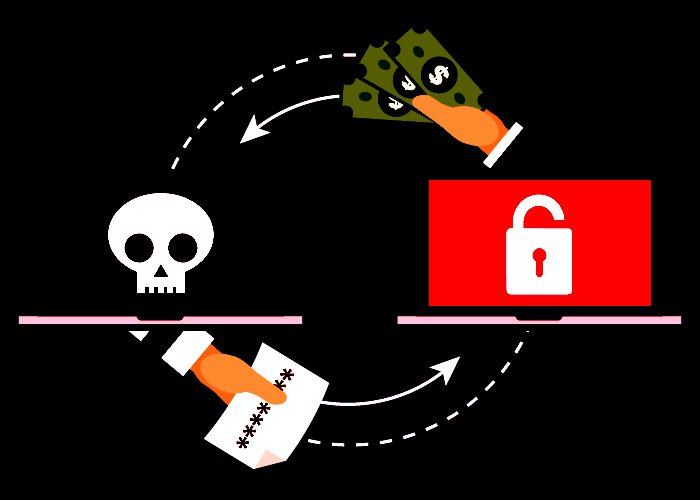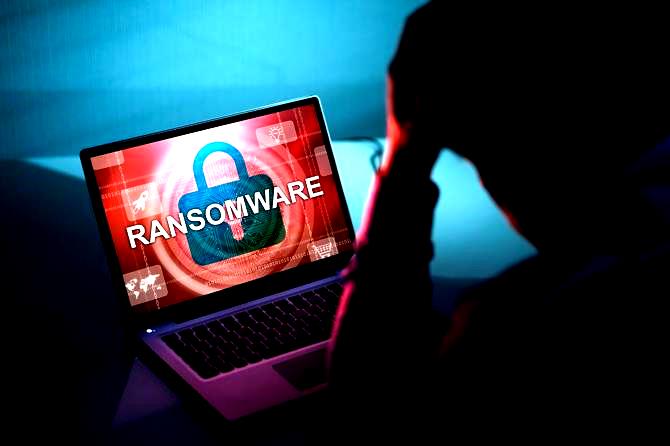🕵️♂️Get Up to 80% Off On All Products, StaySharp⚡
The Evolution of Ransomware-as-a-Service (RaaS): From Early Beginnings to AI-Driven Cybercrime
This in-depth article explores the evolution of Ransomware-as-a-Service (RaaS), tracing its origins from the 2015 TOX platform to its current state as a sophisticated, AI-driven cybercrime ecosystem. It examines key developments, including the rise of double extortion, Big Game Hunting, and decentralized operations, with a focus on new tools enabling affiliates to create fully obfuscated payloads and AI-generated phishing lures. The article includes a concise statistics listing for easy reference, highlighting ransomware’s financial impact and operational scale. It also addresses challenges for defenders, countermeasures, and future trends, providing a comprehensive overview of RaaS’s growth and global threat.
CYBERSECURITYDEVELOPMENT AND ECONOMIC THREATS CYBER WARFARE
Phillemon Neluvhalani
5/16/20256 min read


Ransomware-as-a-Service, or RaaS, has completely reshaped the cybercrime scene. What once required a skilled hacker can now be launched by nearly anyone with bad intentions and a few bitcoins to spare. Thanks to the RaaS model, powerful ransomware tools are just a click away for aspiring cybercriminals—no coding experience required.
Over the past decade, RaaS has evolved from simple tools to sophisticated, professional-grade platforms. Today’s operators use advanced technologies like fully hidden (obfuscated) ransomware payloads and AI-crafted phishing lures to maximize their reach and effectiveness. This article takes a closer look at how RaaS began, how it matured, and where it’s headed next.
Where It All Started: A Dark Take on SaaS
The concept of RaaS first gained traction around 2015, mimicking the legitimate Software-as-a-Service (SaaS) model. The first notable RaaS platform was TOX, which offered a free web-based service where users could generate their own Windows ransomware. It was easy, efficient, and came with a catch: users had to share a portion of their ransom earnings—usually 80% to the affiliate and 20% to the TOX creators.
Although TOX didn’t last long, it planted the seed. By 2016, more advanced platforms like Cerber, Stampado, Petya, and Atom were taking the spotlight. Cerber alone was earning around $200,000 a month by partnering with hundreds of affiliates. These platforms weren’t just tools—they were full business models. They provided marketing materials, undetectable payloads (FUD crypting), and even public presence on social media.
This SaaS-like approach meant cybercriminals no longer needed to be developers. The platform creators handled the malware, while affiliates handled distribution—typically through phishing, stolen credentials, or exploits. RaaS brought a structured, scalable model to cybercrime, complete with subscription pricing and revenue splits.
Leveling Up: From Underground Startup to Criminal Empire
By 2017, RaaS was booming—fueled by the rise of cryptocurrency, which enabled anonymous ransom payments. Well-known ransomware gangs like Maze, Ryuk, REvil, and LockBit started using more aggressive tactics to maximize profits.
Double Extortion Enters the Scene
The Maze group introduced a ruthless twist in 2019: double extortion. Instead of just encrypting files, attackers also stole data. If a ransom wasn’t paid, the data would be leaked on dedicated websites. This added a whole new layer of pressure on victims—especially companies facing legal or reputational fallout.
Leak sites quickly became a staple of RaaS operations. Groups like Cl0p used them to intimidate victims and show off their power to attract new affiliates. In some cases, attackers didn’t even bother encrypting files—they just stole sensitive information, posted it online, and demanded payment.
RaaS Goes Pro
RaaS platforms didn’t stop at better malware. They started looking like actual businesses. User-friendly affiliate portals allowed partners to track infections, ransom payments, and more. Platforms like LockBit even offered real-time dashboards, 24/7 tech support, and detailed documentation.
Some groups handled payment processing and offered laundering services to clean cryptocurrency earnings using methods like coin mixing and tumbling. The professionalism made it clear: RaaS wasn’t just a tool—it was a thriving underground industry.
Big Game Hunting: The Age of High-Profile Attacks
With everything running smoothly, RaaS groups began targeting bigger fish—large corporations, government agencies, and critical infrastructure. The infamous Colonial Pipeline attack in 2021, carried out by a DarkSide affiliate, caused fuel shortages across the U.S. East Coast and led to a $5 million payout. That same year, REvil targeted Kaseya, affecting over 1,500 organizations and demanding a record-breaking $10 million.
These events proved RaaS could hit hard—and scale fast. But the growing threat also drew serious attention from law enforcement. Major takedowns followed, including the FBI’s operation against DarkSide and the 2024 international crackdown on LockBit. Still, the RaaS world didn’t skip a beat—new players like Play and RansomHub quickly filled the gap, often using code from shuttered groups.
Today’s Landscape: Smarter Tools, Sneakier Tactics
RaaS has now entered its most dangerous phase yet, thanks to artificial intelligence and cutting-edge obfuscation methods.
AI-Generated Phishing Lures
Forget clumsy scam emails. Today’s phishing messages are powered by large language models (LLMs) that craft flawless, personalized emails, texts, and even voice messages. These AI-generated lures mimic real corporate communication and often reference current events to seem credible. Groups like FunkSec are already using these tactics to mass-produce social engineering campaigns.
Some attackers are even creating deepfake audio and video to impersonate executives in vishing attacks. As AI tools get better, spotting these scams is getting harder—even for trained professionals.
Fully Obfuscated Payloads
Modern RaaS platforms arm affiliates with ransomware payloads that are nearly invisible to antivirus software. These payloads use advanced encryption, polymorphic code, and FUD crypting services to slip past traditional defenses.
Groups like RansomHub and Akira now target not just Windows but also Linux and VMware environments. They exploit real, signed drivers (BYOVD attacks) to gain kernel-level access—making them especially hard to stop. Many RaaS platforms even offer built-in testing tools so affiliates can check if their payloads are getting flagged before launch.
A Decentralized and Resilient Ecosystem
Since 2023, RaaS operations have become increasingly decentralized. Instead of massive, centralized organizations like LockBit, we now see smaller, agile crews that rent tools, buy stolen credentials from Initial Access Brokers, and operate independently.
This "franchise-style" model is harder to shut down. New groups like RansomHub are competing aggressively, offering higher revenue shares (up to 90%) to draw affiliates. Branding, leak sites, and media hype are now part of the strategy—turning ransomware into a business war for talent and victims.
The Global Reach and Financial Toll
The numbers speak for themselves. In 2020, global ransomware damage was pegged at $20 billion. In early 2024, the average ransom demand was over $5 million, with some groups collecting as much as $75 million in a single attack. Even though total payments dropped by 35% in 2024, attackers are going after fewer, but richer, targets—so the money keeps flowing.
Public institutions are frequent victims. LockBit’s 2024 attack on Wichita, Kansas, and ALPHV’s breach of Alexandria, Louisiana in 2022 show how vulnerable underfunded local governments can be. The 2023 Cl0p attack using a MOVEit zero-day impacted thousands of organizations worldwide.
Key RaaS Statistics
Global Ransomware Revenue (2020): $20 billion (estimated).
Total Ransomware Payments (2024): $813.55 million, down 35% from 2023.
Average Ransom Demand (H1 2024): $5.2 million, up from $1.54 million in 2023.
Average Ransom Demand (2024): $3.96 million.
Record Ransom Payment (March 2024): $75 million.
Cerber Monthly Revenue (2016): ~$200,000.
Colonial Pipeline Ransom (2021): $5 million (DarkSide).
Kaseya Attack Ransom Demand (2021): $10 million (REvil).
Cl0p MOVEit Attack Victims (2023): Thousands of organizations globally.
RansomHub Affiliate Profit Split (2024): 90/10 (affiliate/operator).
Time from Initial Access to Ransom Deployment: As low as 1 hour (2024).
RaaS Platforms Active (2024–2025): LockBit, RansomHub, Play, Akira, FunkSec, ALPHV/BlackCat.
Why RaaS Is So Hard to Fight
Defending against RaaS isn’t easy. The landscape is constantly shifting, and defenders face several uphill battles:
Attribution is tricky: Affiliates can use the same tools as multiple groups, making it hard to trace the source.
Speed is brutal: Attacks can move from breach to ransom in under an hour.
Tactics are evolving: Attackers now exploit non-Windows systems and use signed drivers.
Humans are the weakest link: AI-generated lures are harder to detect than ever.
Fighting Back: What Organizations Can Do
To stay ahead, defenders must adopt a proactive, layered approach:
Patch early, patch often: Automate updates and block vulnerable drivers with Microsoft’s Driver Blocklist.
Use smart EDR tools: Platforms like SentinelOne can detect unusual encryption and access patterns.
Back it up: Keep regular offline backups to minimize the impact of data extortion.
Train your team: Teach employees how to spot phishing and social engineering attacks.
Watch the dark web: Monitor forums and leak sites for early warnings.
Implement Zero Trust: Segment networks and enforce strict access controls to stop attackers from moving laterally.
What’s Next for RaaS?
RaaS is far from done. With AI, 5G, and the explosion of IoT devices, the attack surface is only growing. Quantum computing could eventually crack today’s encryption, opening the door for even more powerful threats. And as more affiliates adopt custom toolkits, attacks will become more precise, stealthy, and destructive.
Law enforcement wins—like the takedowns of LockBit and ALPHV—may offer short-term relief, but they don’t dismantle the broader RaaS machine. As long as it’s profitable, new groups will keep popping up.




